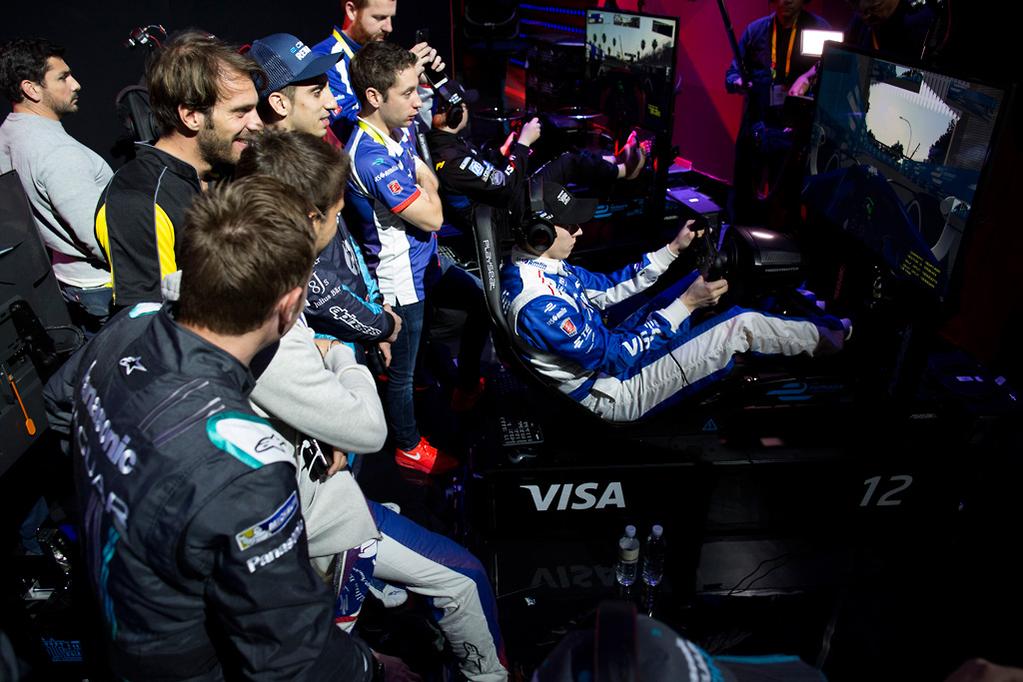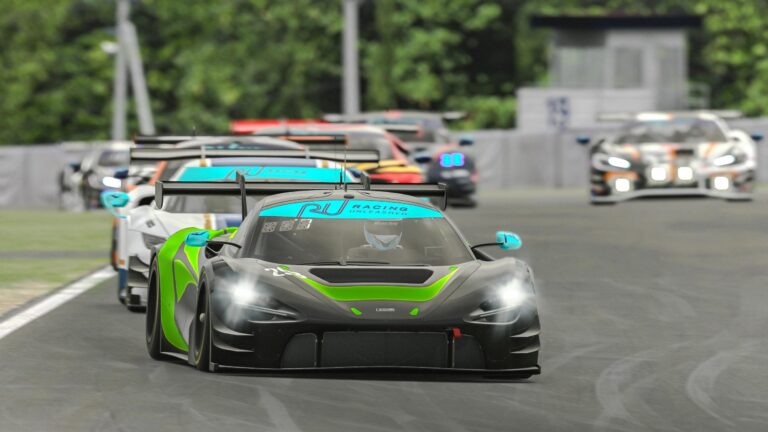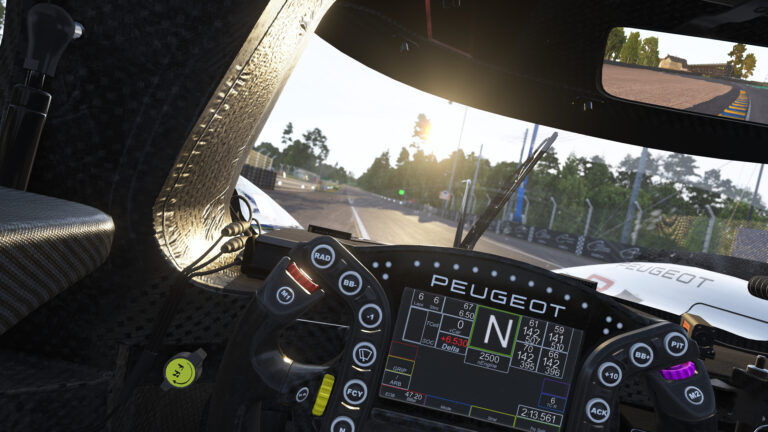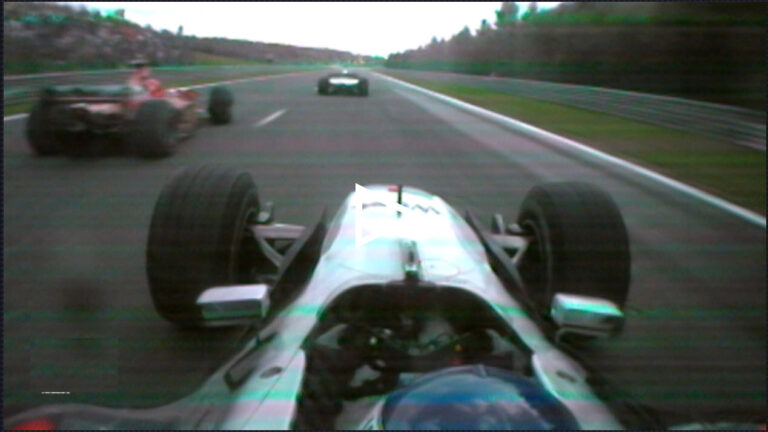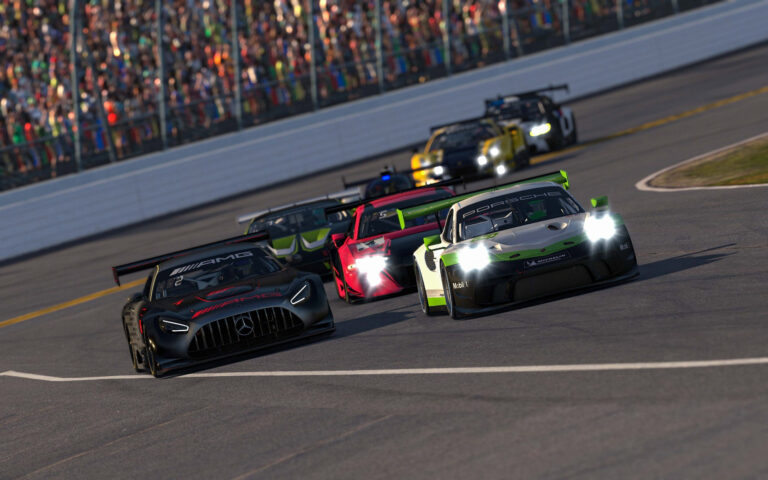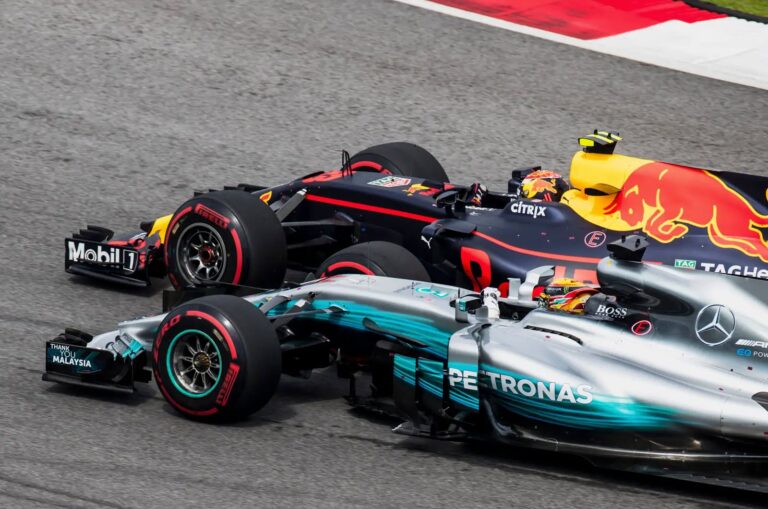If you’ve spent any time in sim racing forums, you’ll have seen the endless debates about force feedback settings. Some swear by running their wheelbases at maximum strength, whilst others prefer a lighter touch. But here’s what might surprise you: lower force feedback settings could actually make you faster on track.
The Secret Pro Racers Know: It’s Not About Strength
Let’s address the elephant in the room: Professional sim racers don’t talk about force feedback purely in terms of strength – they talk about the quality of information it provides. A strong FFB setting can be muddy and overwhelming, masking subtle cues like tyre slip angle. A lower setting, when properly tuned, can provide clearer, more nuanced information, allowing for better car control.

Bono Huis, a professional sim racer, has publicly stated his preference for lower force feedback settings in a YouTube video about his setup.
“I run my FFB quite low actually,” he explains. “I think a lot of people run it quite high but I like to have a little bit more detail in the wheel than like a super heavy wheel, I’d rather have the details.”
Why Fighting Your Wheel Makes You Slower
Lower force feedback is objectively quicker in terms of lap times, particularly on sections with big kerbs, bumps, or rapid direction changes. The reason is simple physics – lower resistance means faster reaction times.
Think about those nasty chicanes where you need to flick the wheel quickly whilst cutting kerbs. With excessive force feedback, you’re fighting against the motor’s resistance. This not only slows your inputs but can tire you out over longer stints, leading to mistakes when it matters most.
Why Pros Buy 25Nm Wheelbases Then Run Them at 30%
You might wonder why anyone would bother with a 25Nm wheelbase if they’re not using all that torque. The answer lies in something called slew rate – essentially, how quickly and accurately the motor can deliver force feedback signals.
Higher-end wheelbases excel at delivering fast, precise feedback, especially in those crucial moments when you’re fishing for grip or catching a slide. It’s not about the raw power; it’s about the quality and speed of the information you’re receiving through the wheel.
Bono Huis demonstrates this perfectly – he runs his Simucube 2 Pro at around 40% overall strength. As he emphasises: “You want to avoid clipping as much as possible because then you’re basically losing the detail in the wheel.”
What Top iRacing Drivers Actually Use
Several top sim racers have given us clues about their approach to force feedback:
Bono Huis: Runs his Simucube 2 Pro at approximately 40% strength, prioritising detail over raw force. He adjusts in-game strength per car to avoid clipping.
Yannick Lapchin (Apex Racing Team): Yannick runs lower FFB gain with very little or no damping. The low gain allows him to feel the fine nuances of the road, whilst the lack of damping keeps the wheel responsive.
Maximilian Benecke: Known for his smooth, controlled driving style, Benecke prioritises feel and precision over brute force in his FFB settings. His success lends credibility to the “lower FFB can be faster” philosophy.
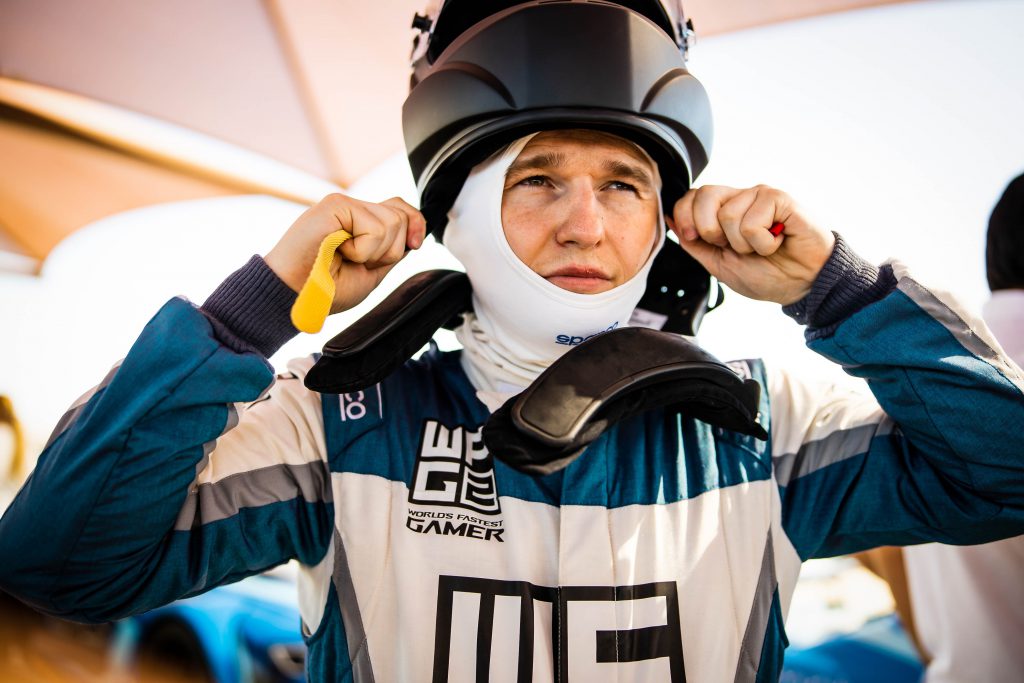
The Step-by-Step FFB Setup Pro Sim Use
Rather than suggesting blanket settings to apply to your own FFB settings, here’s a more nuanced approach:
- Set your wheelbase maximum force properly: Don’t just set it to 100%. A Simucube 2 Ultimate at 100% is vastly different from a Fanatec CSL DD at 100%. Set a safe maximum in your wheelbase software.
- Avoid clipping: Adjust your in-game strength to ensure the strongest forces don’t max out your FFB signal. This preserves detail in critical moments.
- Prioritise linearity: The force you feel should be directly proportional to the forces acting on the car. This makes the car’s behaviour more predictable.
- Start with these guidelines (adjust for your specific wheelbase):
- Damping: 5-10% – just enough to avoid a floaty feeling
- Friction, Inertia, Static Force Reduction: Generally off for maximum responsiveness
- In-game strength: Start at 50% and adjust based on clipping and feel
The Imola Trick: Why Pros Change FFB Mid-Race
Here’s a practical tip that might transform your approach: adjust your force feedback based on the track you’re racing. For circuits like Imola, with its demanding chicanes and kerb-cutting opportunities, consider lowering your force feedback slightly.
This isn’t about making things easier – it’s about optimising your settings for the specific challenges each track presents.
The Exceptions: When High FFB Works
It’s worth noting exceptions like Daniel Morad and Jarno Opmeer, who use stiffer settings. However, we need to understand their context:
- Morad is a real-world racer, reinforcing muscle memory
- Opmeer races F1 games where kerb implementation is more forgiving
- Both may have specific wheelbases that require a higher gain setting for their desired feel
Lower Your FFB – This is What You’ll Feel Immediately
Better tyre slip detection: Lower, more detailed FFB makes it easier to feel subtle changes in tyre slip angle. You can drive closer to the edge without exceeding it.
Improved consistency: Fighting a strong FFB wheel leads to fatigue. A manageable level allows you to maintain focus and precision for longer.
Faster reaction times: Excessive force creates a physical barrier to quick reactions, delaying your ability to correct slides or react to changing conditions.
Your 5-Minute FFB Optimisation Plan
Remember, force feedback is subjective. What works for one driver may not work for another. The key principles are:
- Focus on information quality over raw strength
- Avoid clipping to preserve detail
- Experiment with your specific hardware and preferred sim
- Consider your driving style – analytical drivers often prefer lower settings
- Remember that wheelbase and game engine make a huge difference
Force feedback is just one piece of the performance puzzle, but it’s an important one. By focusing on information quality rather than raw strength, you can unlock lap time whilst reducing fatigue.
Start by understanding what maximum grip feels like with moderate settings, then fine-tune based on the principles of linearity and clipping avoidance. Don’t assume that more force equals better driving – sometimes, less really is more.
The fastest drivers aren’t necessarily using the strongest settings – they’re using the settings that give them the clearest information about what the car is doing. That’s the real secret to speed.

